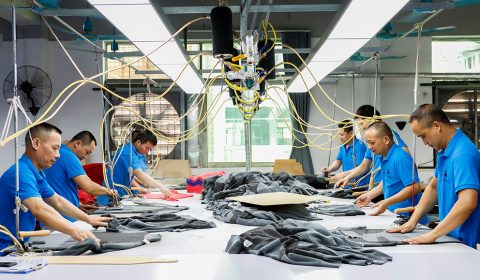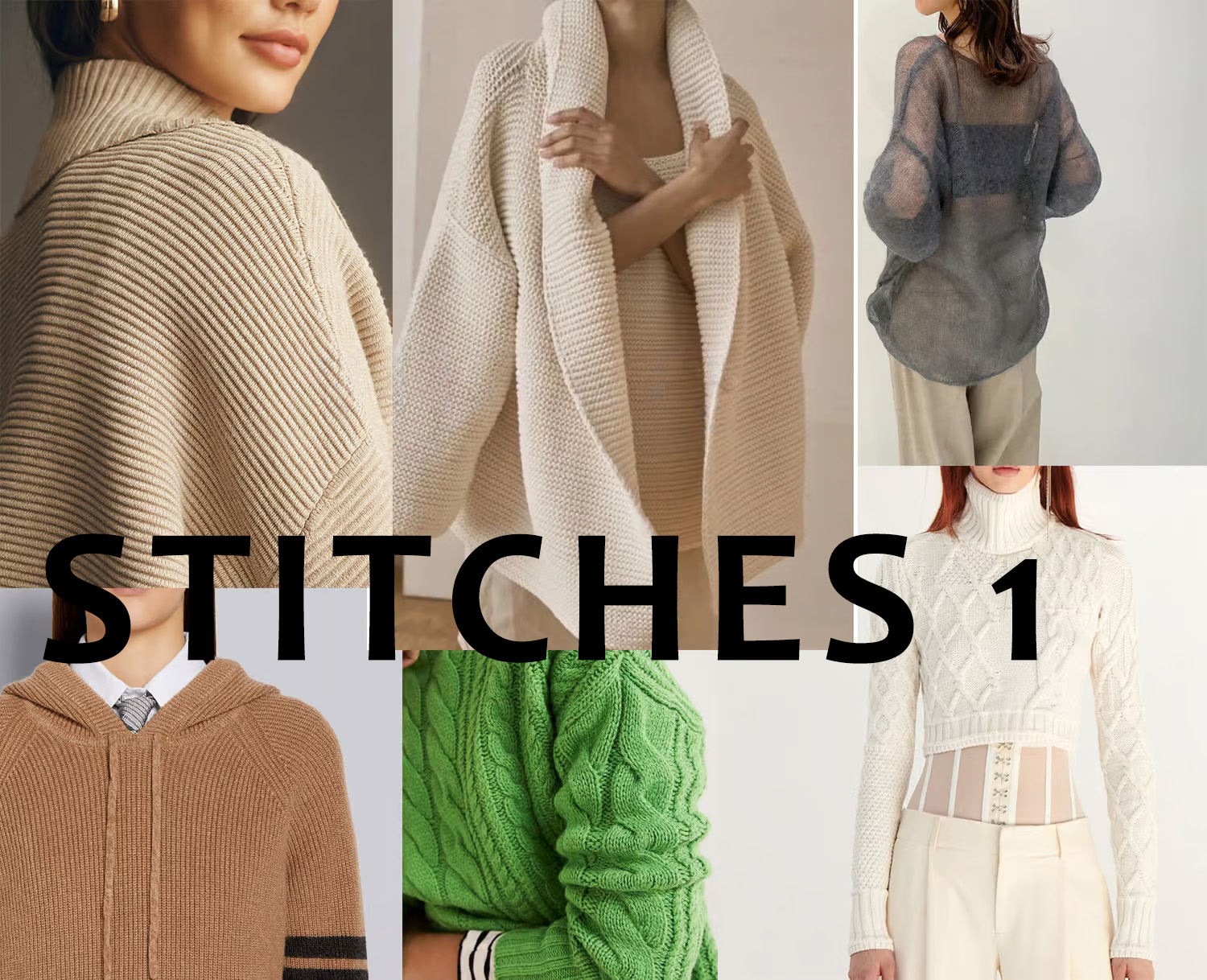The importance of knitwear as a fashion garment has been deeply rooted in our lives. From socks to sweaters, knitwear not only brings us comfort, but also the darling of the fashion industry, constantly showing its style on the fashion stage. The popularity of knitwear can be seen, whether it is in the cold winter or the cool summer, you can see people wearing various styles of knitwear. The design of knitwear is not only a simple fabric weaving, it contains the wisdom and inspiration of designers, and has a profound impact on the psychology of consumers.
The influence of knitwear design on consumer psychology
The material of knitted clothing is soft and comfortable, fits the skin, and gives people a sense of warmth and security. Wearing a well-fitting knit sweater, as if wrapped in a layer of soft feathers, makes one feel at home. This comfort is not only physical, but also psychological. When people feel comfortable, their mood will also become happy, which increases self-confidence. Wearing comfortable knitwear, people are more willing to show their style, exude confidence and charm.
With the constant changes in the fashion industry, knitting clothing design is also constantly innovating and breaking through. From simple to retro, from printed to three-dimensional, a variety of different styles of knitwear emerge endlessly, to meet the fashion needs of different consumers and personality expression. Consumers can stand out from the crowd by choosing knitwear with different styles, colors and patterns to show their unique taste and personality characteristics. Knitwear design is not only a reflection of fashion, but also a presentation of personality, allowing consumers to show their unique charm on the fashion stage.
The diversity and individuation of knitwear design not only meet the fashion needs of consumers, but also shape the consumer psychology. Through the dual influence of comfort and fashion, knitwear design has successfully won the favor of consumers and become an indispensable part of the fashion industry.
Consumer perceptions and attitudes towards different brands of knitwear
In today’s era of fierce market competition, consumers’ cognition and attitude towards different brands of knitwear are affected by many factors. The position of the brand in the minds of consumers often determines their choice and attitude towards the product. The following are some factors that affect consumers’ perceptions and attitudes towards brands.
Consumers’ perception of a brand is often closely related to its popularity. Brands with high visibility tend to gain more consumer attention and recognition. For example, some well-known fashion brands such as Prada, Gucci and other products in the field of knitwear will receive more attention and favor from consumers because of their brand awareness. Consumer perceptions of these brands are often based on factors such as the brand’s history, product quality, and the brand’s performance in the market.
Brand image determines consumers’ attitude towards the brand to a large extent. The image of a brand is often constructed by its product characteristics, brand culture, marketing activities and other factors. Consumers will judge a brand based on its image whether it matches their values and lifestyle. For example, some brands may be recognized by consumers with the image of fashion, high-end, and environmental protection, while others may be favored by consumers with the image of affordable, casual, and personalized. Consumer pair
The history and tradition of a brand is its unique identity and one of the important bases for consumers to recognize the brand. Some brands with a long history and deep tradition can often win the respect and trust of consumers. Consumers will see these brands as representatives of rich experience and expertise, and will be more willing to buy their products.
Brand marketing activities play a crucial role in consumer awareness and attitude. Through smart advertising campaigns, celebrity endorsements, social media marketing and other means, brands can expand their influence, enhance brand awareness and reputation. Consumers are often influenced by brand marketing activities, thus forming their cognition and attitude towards the brand. For example, advertisements launched by some brands through cooperation with stars can attract more consumers’ attention and love, thus improving brand awareness and sales.
Design elements and consumer preferences
In the design of knitted clothing, various design elements such as color, pattern and material play a crucial role, which directly affects the purchasing decision of consumers. Through in-depth analysis of consumers’ preferences for these design elements, their psychological needs can be better understood, thus providing guidance for knitwear design and sales.
Color plays a crucial role in the design of clothing because it directly affects the emotional and psychological feelings of consumers. For knitwear, consumers’ color preferences are often related to the season, fashion trends, and personal style. For example, in winter, deep shades such as dark blues, browns and deep purples may be more popular because they bring warmth and a sense of security. In the summer, bright colors such as pink, bright yellow and sky blue may be more popular because they bring freshness and vitality. In addition, personal preference is also an important factor affecting color preferences, some consumers prefer soft neutral tones, while others prefer bright, contrasting colors. Therefore, knitwear designers need to pay close attention to consumers’ preferences for different colors and flexibly use a variety of colors to meet their needs.
Pattern is another important factor that influences consumers’ purchasing decisions. Consumer preferences for patterns are often influenced by culture, fashion trends and personal preferences. For example, some consumers prefer simple and pure patterns, such as stripes and plaid, because they can show simplicity and classic style. Other consumers prefer complex and artistic patterns, such as prints and geometric patterns, because they can show personality and uniqueness. In addition, some cultures and regions may have specific pattern preferences, and designers need to adjust the pattern design according to the needs of different markets to enhance the attractiveness and competitiveness of products.
Knitwear design can present a variety of different styles, such as classic, fashion, retro, casual, etc., each style has a specific consumer group. Classic style is usually based on simple, traditional designs, suitable for consumers who value quality and timeless style. Fashion style is more focused on novel and avant-garde design, attracting consumers who pursue fashion and personality. The retro style blends elements of the past with current trends, appealing to consumers who are nostalgic and seeking a sense of uniqueness. Casual style focuses on comfort and informality, suitable for those consumers who pay attention to comfort and a sense of freedom. Therefore, designers need to determine the design style according to the preferences and needs of the target consumer group in order to enhance the market competitiveness of the product.
Through in-depth analysis of consumer preferences for color, pattern and design style, knitwear designers can better grasp the market demand and create products that meet the psychological needs of consumers, thereby enhancing brand competitiveness and market share.




 English
English Deutsch
Deutsch Français
Français Italiano
Italiano Español
Español Русский
Русский Polski
Polski Nederlands
Nederlands Svenska
Svenska

